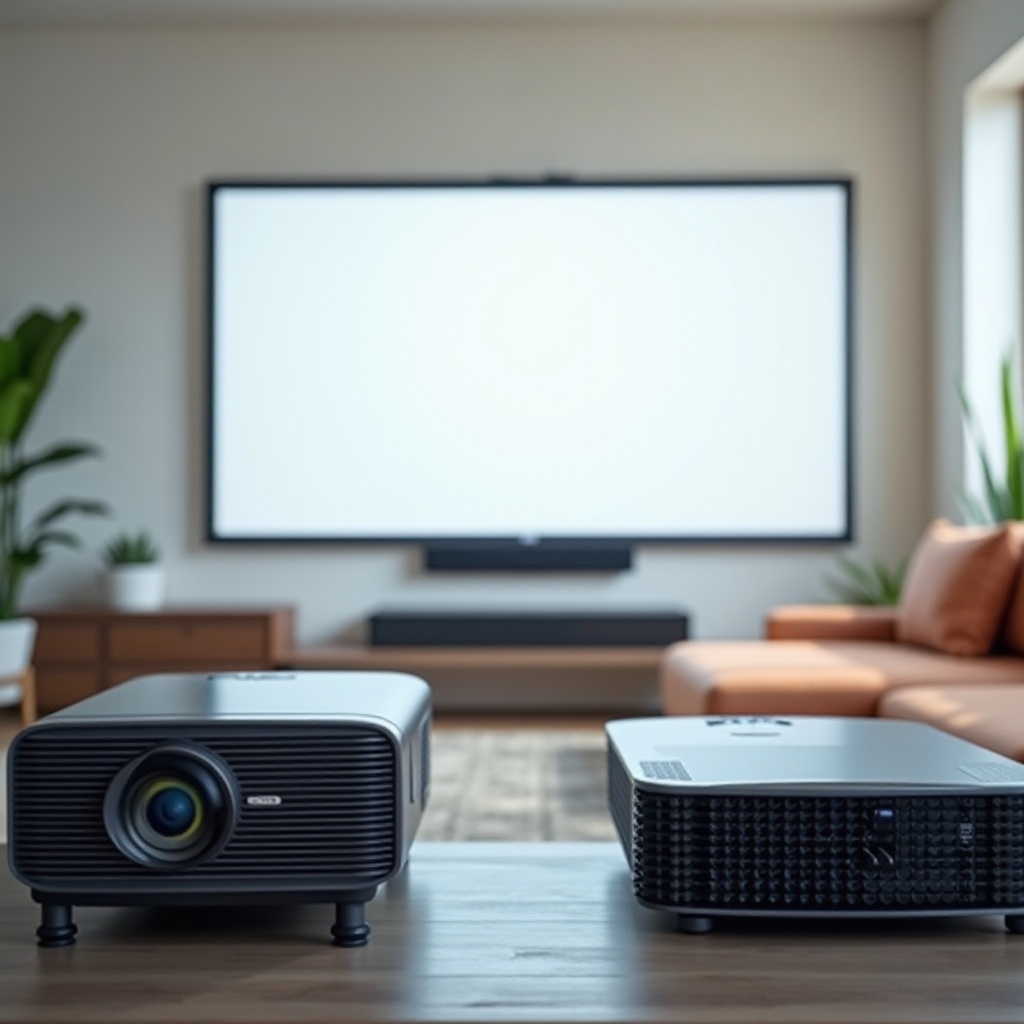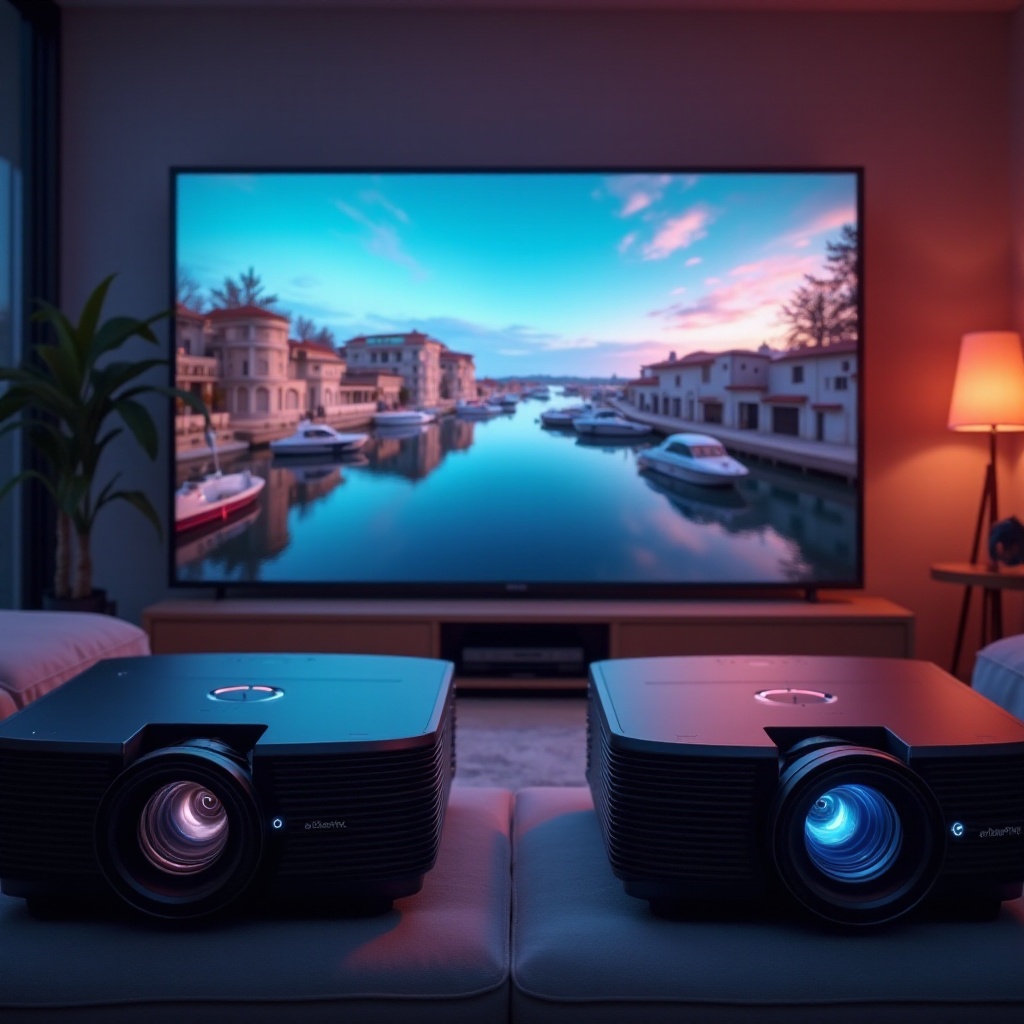Introduction
Choosing the right projector can seem complicated, especially when deciding between 720p and 1080p. Each resolution brings unique advantages, making them suitable for different needs and budgets. This comprehensive guide will help you understand the differences between 720p and 1080p projectors, the pros and cons of each, and how to choose the right projector for your specific needs.

Understanding Projector Resolutions
Resolution refers to the number of pixels that create the image on the screen. Higher resolution means more pixels, resulting in a clearer and more detailed picture. For projectors, common resolutions include 720p and 1080p.
- Pixels: A pixel is the smallest unit of a digital image. More pixels mean higher resolution and clearer images.
- 720p Resolution: Often referred to as HD (High Definition), 720p has a resolution of 1280×720 pixels, with each frame comprising around 920,000 pixels.
- 1080p Resolution: Known as Full HD, 1080p features a resolution of 1920×1080 pixels, with each frame containing over 2 million pixels, providing more detail compared to 720p.
Understanding these basic concepts sets the stage for diving deeper into each type of projector.
720p Projectors Explained
720p projectors, while not the highest resolution available, still offer a quality viewing experience, particularly for casual use. They are typically more affordable and consume less power compared to their higher-resolution counterparts.
Applications:
– Ideal for small to medium-sized rooms.
– Suitable for streaming standard HD content.
– Great for sports bars or outdoor movie nights where ultra-high resolution isn’t crucial.
Their affordability and suitability for standard content make 720p projectors an excellent option for budget-conscious users.
1080p Projectors Explained
1080p projectors provide a significant jump in picture quality over 720p models. With a higher pixel count, these projectors offer clearer, crisper, and more detailed images, making them ideal for home theaters and professional settings.
Applications:
– Best suited for larger screens and spaces.
– Excellent for watching Blu-ray movies and high-definition television.
– Preferred for gaming, presentations, or any application where image detail is paramount.
Though 1080p projectors are pricier than 720p models, the enhanced picture quality justifies the investment for users who demand high performance.
Key Differences Between 720p and 1080p Projectors
When comparing 720p vs 1080p projectors, consider several key differences:
- Resolution and Clarity:
- 1080p projectors offer more pixels, resulting in sharper and more detailed images.
-
720p projectors produce good quality but may appear less sharp on larger screens.
-
Cost:
- 720p projectors are generally more affordable.
-
1080p projectors, while expensive, offer superior image quality.
-
Content Compatibility:
- 720p projectors are sufficient for standard HD content and casual viewing.
-
1080p projectors are ideal for those using Blu-ray discs or high-definition streaming services.
-
Performance:
- 1080p projectors outperform 720p in terms of image clarity and can support larger screen sizes without a loss in quality.
- 1080p projectors are more future-proof, offering better performance for current and upcoming high-definition content.
Understanding these differences will help you make the right choice based on your viewing needs and budget.

Pros and Cons of 720p Projectors
Pros:
1. Affordable: Lower cost makes 720p projectors more accessible.
2. Energy-efficient: Tend to consume less power.
3. Adequate for casual viewing: Suitable for standard HD broadcasts and non-professional use.
Cons:
1. Limited resolution: Not suitable for very large screens.
2. Less detail: Lower pixel count may result in a less sharp image.
3. Dated technology: May not support future advancements in media resolutions.

Pros and Cons of 1080p Projectors
Pros:
1. Superior image quality: Higher resolution provides clearer, detailed images.
2. Versatile use: Suitable for movies, gaming, and professional presentations.
3. Future-proof: Better support for high-definition content and new technologies.
Cons:
1. Higher cost: More expensive compared to 720p projectors.
2. Increased power consumption: Higher resolution requires more power.
3. Larger size: Typically bigger and may need more space.
Choosing the Right Projector for Your Needs
Selecting the right projector involves assessing your viewing preferences, room size, and budget. Consider the resolution based on these factors:
- Budget: If cost is a major concern, 720p projectors offer an affordable option.
- Viewing Habits: For high-definition content and detailed visuals, invest in a 1080p projector.
- Room Size and Setup: A larger room and screen benefit from the higher resolution of a 1080p projector.
By focusing on these aspects, making an informed decision becomes significantly easier.
Conclusion
Both 720p and 1080p projectors offer distinct advantages. Your choice will ultimately depend on your specific viewing needs, room size, and budget. Careful consideration of these factors will ensure you choose the right projector for an optimal viewing experience.
Frequently Asked Questions
Is there a significant difference between 720p and 1080p projectors?
Yes, 1080p projectors provide a sharper, more detailed image than 720p due to the higher pixel count.
Which is better for gaming: 720p or 1080p projectors?
For gaming, a 1080p projector is better because it offers superior image quality and detail, enhancing the gaming experience.
Are 1080p projectors worth the extra cost?
If you prioritize image quality and future-proofing, 1080p projectors are worth the investment. They deliver better visuals and support high-definition content.